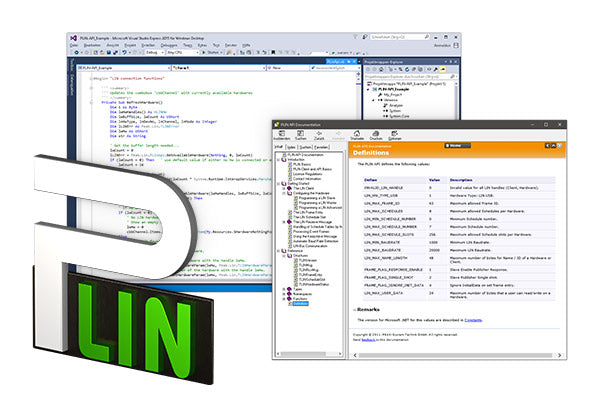
LIN (Local Interconnect Network) is a serial network protocol which is characterized by a master-slave architecture and transmission patterns.
The master regulates the bus access and controls the communication of up to 16 participants. Only when the master prompts a slave, the latter is allowed to transmit its stored information. On each request of the master, answers defined within a schedule table follow in a fixed time sequence.
LIN was introduced by five automobile manufacturers in 1999 and further developed under the supervision of the LIN Consortium. Until today, the LIN bus has proven itself to be a cost-effective alternative to the CAN bus for networking sensors and actuators in vehicles, such as seat, door, mirror, and climate controls.
The programming interface PLIN-API (PEAK LIN Application Programming Interface) enables the connection of Windows® applications to the LIN bus. The API provides various functions for developers in the programming languages C++, C#, C++/CLR, C++/MFC, Delphi, VB.net, and Python 3.x.
Note:
The PLIN-API is designed to be used exclusively with a PC LIN interface from PEAK-System.
- API for developing applications with LIN connection
- Windows® DLLs for the development of 32-bit and 64-bit applications
- Multiple applications can be operated on a physical channel at the same time
- Simple switching between the channels of a PLIN PC hardware
- Internal buffering of messages on software level (system service)
- Precision of time stamps on received messages up to 1 µs
- Allows storing custom data (max. 24 bytes) on the hardware
- Notification of the application through Windows® events when a message is received and on plug-in or plug-out of a device
- Function to get error code descriptions in 4 languages
System Requirements:
- Windows® 10, 8.1, 7 (32/64-bit)
- At least 2 GB RAM and 1.5 GHz CPU
- For the LIN bus connection: PC LIN interface from PEAK-System
| PLIN-API |
| API for the development of applications with LIN connection for Windows® |
